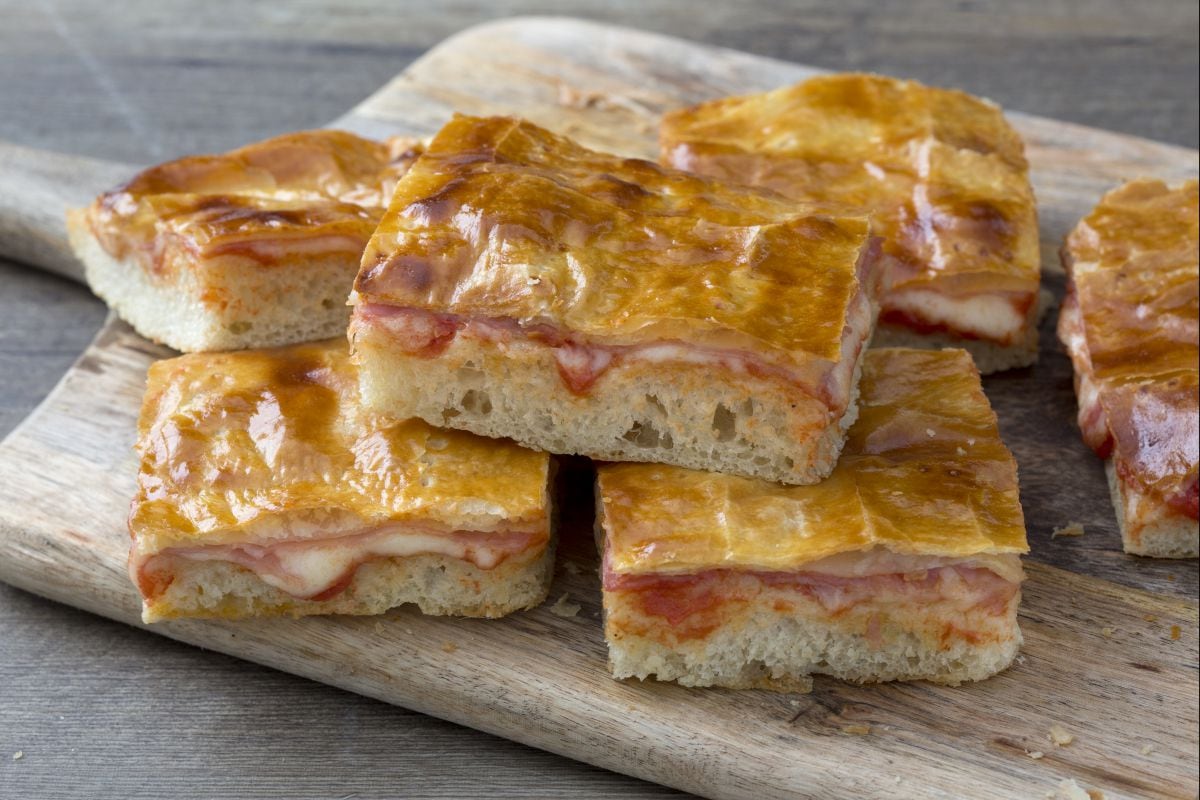Pizza tongues
- Average
- 1 h 40 min


A soft base, a rich and melted filling and an ultra-fragrant surface! These are just 3 of the essential adjectives for describing a parigina. Let's take things one step at a time. What is it? It is a rustic pizza, so basically the classic dough used for making pizza margherita. However, it is also a filled, or stuffed pizza, as they would say in Naples, with quite a characterizing topping: tomato, cheese and cooked ham. Lastly, there's a layer of puff pastry. As strange as this addition may sound, the puff pastry is actually what makes it so popular. Parigina pizza is a product that is difficult to find in pizza restaurants in the evening. You are more likely to come across it in delis and bars, ready to be enjoyed as a snack or a quick lunch. Parigina wins everyone over with its simplicity and flavor; it is one of the most highly appreciated street foods by our Neapolitan friends. We will now explain how you can make it at home too. Fire up your stove and let's get started!

To prepare parigina pizza, start with the pizza dough: place the water at room temperature in a bowl and dissolve the yeast 1 by stirring with a fork 2. Place the flour and sugar in a bowl and stir by hand 3

before gradually adding the water with the yeast 4. Slowly incorporate and knead by hand 5 until the dough takes shape 6.

As soon as the dough takes shape, gradually add the oil 7. Add half, then the salt 8, incorporate, and now add the remaining part of the oil. Knead once more to obtain a homogeneous mixture 9.

Place it on a pastry board and continue to knead for another 10-15 minutes 10. Gently roll the dough into a smooth and homogeneous ball; if too soft, add a pinch of flour. Now place the ball in a large container 11, cover with plastic wrap and leaven at a temperature of 82°F (27°C) for around 3 hours 12.

In the meantime, drain the peeled tomatoes and leave them to rest for a few minutes so that they become nice and dry 13. Now remove the rind of the caciocavallo and thinly slice the cheese 14. Once drained, the tomatoes should weigh around 1 lb (500 g) 15.

Press them down with a fork, or finely chop them with a knife 16. Once leavened, the dough should triple in volume: remove the wrap 17 and place it on a previously greased 12x15 inch (32x38 cm) oven tray. Spread the dough out with your fingers, but don't worry too much if it shrinks: persist, without making a hole or tearing it 18.

Cover the dough once more and leave to rest for twenty minutes or so 19. Once this time is up, remove the plastic wrap and sprinkle the tomatoes over the entire surface, leaving around an inch or so free around the edges 20. Now coat with the slices of cooked ham 21.

Add the sliced caciocavallo cheese 22: try to evenly cover the entire surface 23. Lastly, spread the puff pastry and try to obtain a rectangle that is large enough to cover the pizza 24.

Place the puff pastry over the pastry, even out the edges and perforate the surface with the prongs of a fork 25. Place the egg yolk and cream in a bowl and stir 26, then dab this mixture onto the surface with a brush 27.

Bake in a static oven preheated to 392°F (200°C) for around 30-35 minutes 28. Once the baking time is up 29, remove the pizza and leave it to cool for 5 minutes. Remove the parigina from the tray and cut it into 12 pieces with a serrated knife 30.